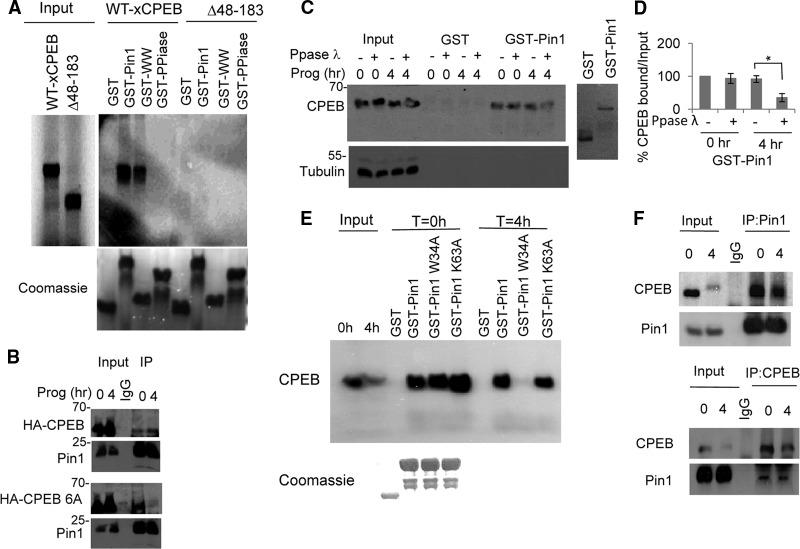Fig 2.
A two-step interaction between CPEB and Pin1. (A) mRNA encoding WT HA-tagged CPEB or the Δ48–183 CPEB mutant was in vitro translated in the presence of [35S]methionine and used for pulldown assays with GST-Pin1, the GST-WW domain, or the GST-PPIase domain as the bait. (B) mRNA encoding WT HA-tagged CPEB or a CPEB mutant with alanine substitutions for serine or threonine residues that are phosphorylated during maturation (CPEB 6A) was injected into oocytes that were then treated with progesterone for 0 or 4 h. Pin1 was then immunoprecipitated and Western blots probed for Pin1 or HA. A mock immunoprecipitation with nonspecific IgG was also performed. (C) Extracts from oocytes treated with progesterone for 0 or 4 h were treated with λ phosphatase and then applied to GST or GST-Pin1 columns. The eluted material was probed for CPEB and tubulin. At right is a Coomassie blue-stained gel showing the integrity of recombinant GST and GST-Pin1. (D) Quantification of the three experiments in panel B. The error bars refer to SEM, and the asterisk indicates statistical significance (P < 0.05). (E) Extracts from untreated or progesterone-treated oocytes were applied to GST, GST-Pin1, GST-Pin1 W34A, or GST-Pin1 K63A columns, followed by Western blotting for CPEB. (F) Control or progesterone-treated oocyte extracts were reciprocally immunoprecipitated for CPEB and Pin1 and blotted for Pin1 and CPEB, respectively.

